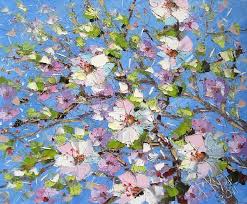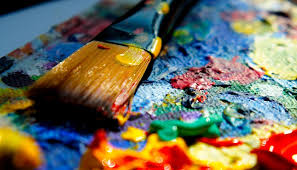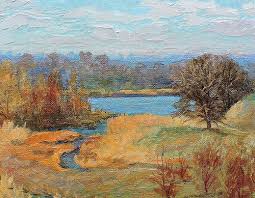otherwise
EXCURSION TO THE WORLD OF PAINTING (part 2)
 By depicting reality on a two-dimensional plane, painting creates the illusion of three-dimensionality and volume: people and objects appear to be at different distances from the viewer — some closer, others farther, and nature depicts a current that sky seems to stretch to the horizon. For example, in a relatively small picture by I. Levitan “Vladimirka” the road is perceived as infinity.
By depicting reality on a two-dimensional plane, painting creates the illusion of three-dimensionality and volume: people and objects appear to be at different distances from the viewer — some closer, others farther, and nature depicts a current that sky seems to stretch to the horizon. For example, in a relatively small picture by I. Levitan “Vladimirka” the road is perceived as infinity.
The impression of depth is achieved using the law of perspective. A linear perspective makes it possible to build the apparent outlines of objects, and an aerial perspective – a change in color and shape. Thanks to chiaroscuro, an illusion of volume, bulge is created. Chiaroscuro is formed by a subtle and accurate combination of the illuminated and unlit side of the objects depicted in the picture. Continue reading




